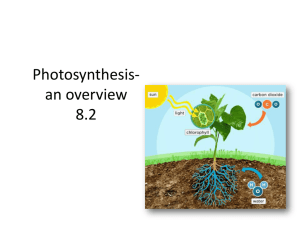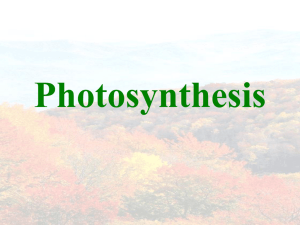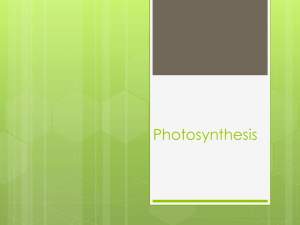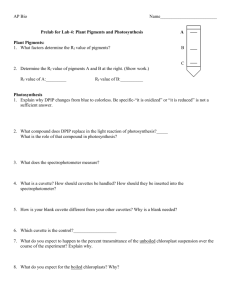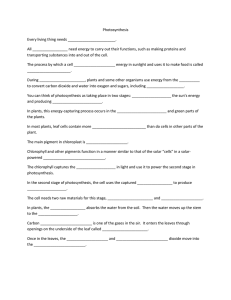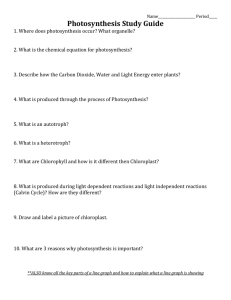Photosynthesis I - christophersonbiology
advertisement
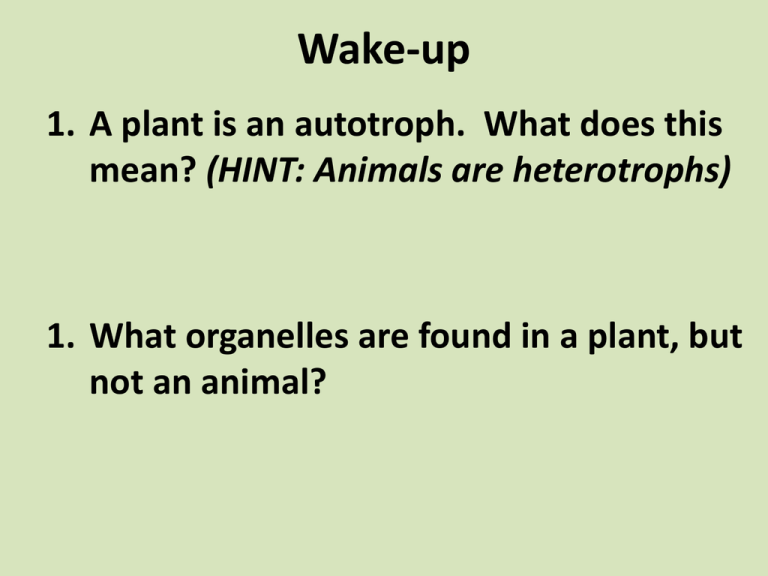
Wake-up 1. A plant is an autotroph. What does this mean? (HINT: Animals are heterotrophs) 1. What organelles are found in a plant, but not an animal? Photosynthesis Photosynthesis I Photosynthesis Function To produce glucose (food) for producers The formula for glucose: C6H12O6 Photosynthesis: How? Plants absorb sunlight energy, carbon dioxide and water to make glucose Organisms that Undergo Photosynthesis: Plants Bacteria Protists – ex/ Green Algae Photosynthesis: Location Chloroplast Chlorophyll: Pigment Producer Leaf Leaf Cross-section Structure: Chloroplast Thylakoid: Groupinside of pigments; Stroma: Fluid Grana: Stack of Thylakoids absorb sunlight energy the chloroplast Wake-up Label the diagram B to the right C A 2. What is photosynthesis? 3. What is needed for photosynthesis? Pigments Found inside the thylakoid Absorb sunlight energy and give plants their color. Types of Pigments: Chlorophyll a Bright Green Types of Pigments: Chlorophyll b Yellow-green Types of Pigments: Carotenes Light Yellow (Fall colors) Types of Pigments: Carotenes Orange (Fall colors) Types of Pigments: Carotenes Red (Fall colors) Types of Pigments: Xanthophyll Yellow Photosynthesis Summative Equation (Words) Sunlight Energy Carbon dioxide + Water Glucose + Oxygen Reactants What is needed Products What is produced Photosynthesis Summative Equation (Formula) Sunlight Energy CO2 + H2O C6H12O6 + O2 Reactants What is needed Products What is produced Photosynthesis Summative Equation (Sentence) Carbon dioxide, water, and sunlight energy are absorbed to produce glucose (food) and oxygen Chromatography: Separate pigments Chromatography: Plant Pigments
